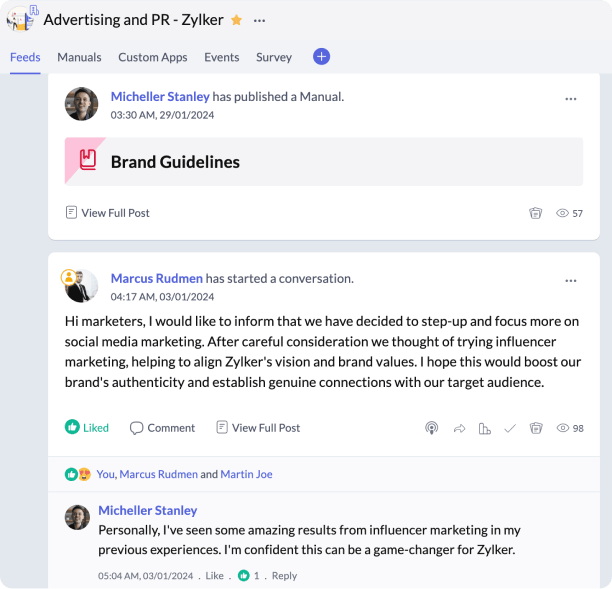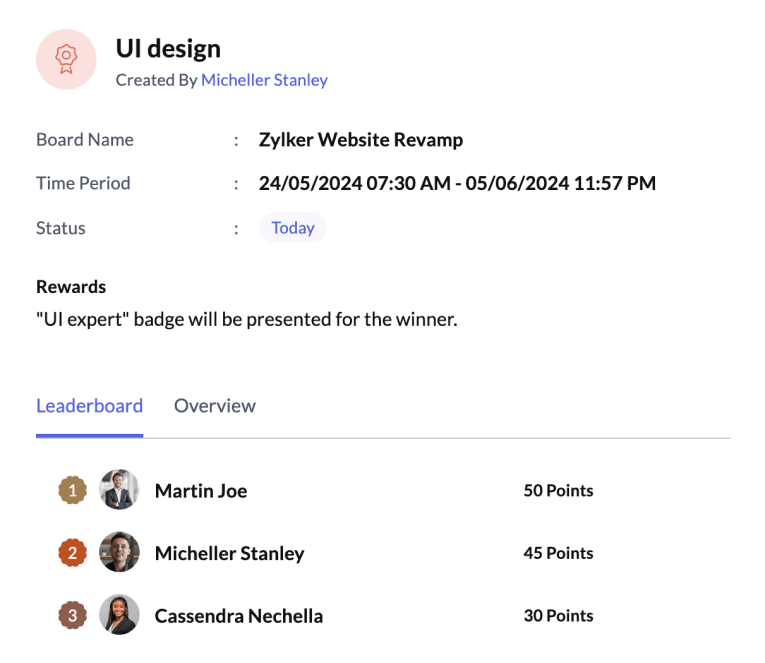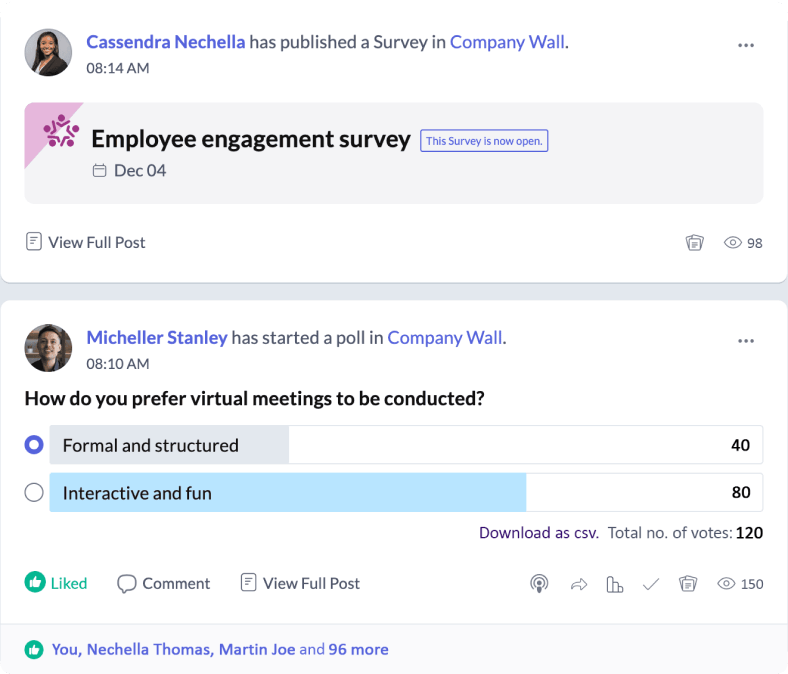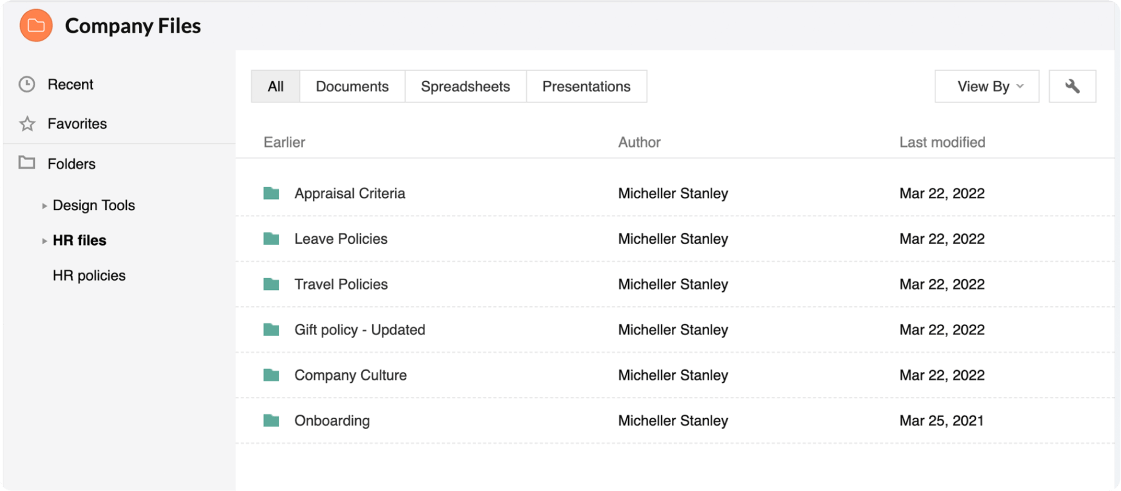Understanding employee engagement Strategies, solutions, and benefits
Foster a positive work culture by adopting the right approaches and tools.
Free for 15 days
No credit card required


The role of employee engagement
Employee engagement means fostering a deep connection between employees and their work. It's more than satisfaction; it’s about creating an environment where employees feel motivated to go above and beyond in their roles. Engaged employees contribute to a productive, positive, and growth-oriented workplace.

Why does employee engagement matter in the modern workplace?
The modern workplace is dynamic, with diverse teams, remote work setups, and evolving employee expectations. Engaging employees in this setting is crucial for:
- Reducing turnover: Engaged employees are less likely to leave, reducing recruitment and training costs.
- Boosting productivity: Employees who are committed to their roles work more efficiently and deliver higher-quality results.
- Creating a positive culture: Engagement fosters collaboration and mutual support, which positively influences the workplace culture.
Prioritizing employee engagement
Putting employee engagement first is all about building a workplace where people feel excited to contribute every day. When employees are engaged, they’re more motivated, more creative, and more committed to the organization’s goals. This isn’t just good for morale—it’s good for business, too.
By focusing on open communication, recognizing achievements, and creating opportunities for growth, companies show employees that they’re valued. This sense of belonging makes a big difference, helping people feel connected and driven to do their best. When engagement is a priority, everyone wins.
Who's responsible for employee engagement?
Creating an engaged workforce isn’t just the job of one person or department. It’s a shared responsibility among leaders, HR professionals, and employees. Engagement thrives in a culture where everyone feels they play an important role in shaping a supportive and connected workplace.
The role of leaders and managers
Leaders and managers are instrumental in shaping the engagement culture within an organization. They set the tone for communication, motivation, and organizational values. Engaged leaders are those who listen to their teams, provide clear direction, and inspire their employees to perform at their best.
Effective managers foster trust and transparency, encourage innovation, and support their teams’ professional development. Leaders who engage in regular feedback sessions and offer recognition can boost morale and increase employee loyalty.
Human resources: Driving engagement initiatives
HR departments are often at the forefront of employee engagement efforts. They are responsible for designing and implementing engagement initiatives, such as employee surveys, recognition programs, and career development opportunities. HR teams also play a critical role in ensuring the alignment of company values with employee experiences.
Employees as active contributors in engagement efforts
While leaders and HR teams drive engagement programs, employees also need to contribute. Engaged employees take ownership of their own development, offer feedback, and participate in company initiatives. When employees feel that their voices are heard and valued, they're more likely to be committed to the organization’s success.
Exploring employee engagement solutions
Keeping employees engaged is all about creating a positive and inspiring work environment. Engaged employees are more productive, motivated, and committed to their work. Here are some simple ways to make it happen:
Create space for open conversations
Listen to your employees. Regular chats, feedback sessions, or open forums can help them feel valued and connected to the bigger picture.
Focus on wellness
Encourage work-life balance, offer wellness programs, or organize fun activities. When employees feel good, they bring their best selves to work.
Celebrate wins, big or small
Acknowledge efforts, whether it's a quick "Great job!" or a formal recognition. A little appreciation goes a long way in boosting morale.
Foster team connections
Plan team-building activities or casual get-togethers. Strong relationships at work help employees feel a sense of belonging.
Support growth and learning
Give your team opportunities to learn new skills or take on challenges. Growth fuels engagement and keeps things exciting.
Bring in technology
Use tools that simplify collaboration, communication, or gather feedback. The right tech can streamline work and keep employees engaged effortlessly.
Technology’s role in enhancing employee engagement
With changing work styles—like remote and hybrid models—and growing expectations, keeping everyone connected and motivated is a challenge. That’s where technology steps in, offering innovative ways to solve these problems and create a better workplace experience.
Why use technology to boost employee engagement?
The workplace is more complex than ever. Employees want to feel connected to their teams, appreciated for their work, and have their voices heard. But here’s the reality:
- Remote work can make people feel isolated.
- Without proper feedback channels, employees often feel overlooked.
- A one-size-fits-all approach to engagement just doesn’t work anymore.
Technology makes tackling these issues easier. It connects employees no matter where they are, helps organizations listen to their people, and allows leaders to create more personalized and meaningful engagement strategies. In short, it helps employees feel more involved and valued.
What are employee engagement platforms?
Employee engagement platforms are digital tools that help improve workplace connections and experiences. Think of them as virtual hubs where employees can:
- Stay informed and connected with their colleagues.
- Share feedback and ideas openly.
- Receive recognition and celebrate wins.
These Platforms bring everything together in one place, making it easier for organizations to create a positive work environment where employees thrive.
The difference they make
Engagement platforms like Connect can truly transform the workplace. They help employees feel connected, even when working remotely, and boost productivity by keeping them motivated. With tools that track employee sentiment, leaders can make smarter decisions based on what matters most to their team. Engaged employees are also more likely to stay, reducing turnover and recruitment costs. These platforms don’t just solve problems—they create a work environment where employees are excited to contribute every day.
What should employee engagement platforms offer?
When selecting an employee engagement solution, it’s important to look for features that address key engagement drivers. Employee engagement solutions like Zoho Connect offer everything you need to keep your team engaged and motivated. Here are some core features that any effective engagement platform should offer:
A communication and collaboration solution
A central hub for team communication, file sharing, and collaboration on projects can help employees feel connected and aligned with company goals.
Survey and feedback tools
Regular surveys and feedback tools allow employees to share their thoughts and provide valuable input on company culture, policies, and initiatives.
Recognition and rewards
Platforms that allow managers and peers to recognize employee achievements contribute to a culture of appreciation and motivation.
Learning and development platforms
Engagement thrives when employees feel they have the opportunity to grow and advance in their careers. Learning platforms that provide access to training, skills development, and career progression tools help keep employees engaged.
Ways to measure employee engagement
Tools that collect and analyze engagement data can help identify areas of improvement and ensure that engagement initiatives are having a positive impact.
How employee engagement technology solutions drive results
Now that we’ve covered the features of employee engagement solutions, let’s explore how these technologies contribute to real results for organizations.
Enhancing communication and collaboration
By providing tools that facilitate communication across teams, technology makes it easier for employees to collaborate on projects, share ideas, and stay informed. This leads to better teamwork, faster decision-making, and a stronger sense of connection within the organization.
Measuring and analyzing employee satisfaction and sentiment
Engagement solutions that include analytics help organizations track employee satisfaction over time. By gathering data through surveys, feedback tools, and sentiment analysis, companies can get a better understanding of what’s working and what’s not. This data can guide adjustments to engagement strategies and ensure that employees’ needs are met.
Building a culture of recognition and appreciation
Recognition and appreciation are essential components of employee engagement. Solutions that enable peers and managers to recognize employees for their hard work and achievements contribute to a positive and motivating work environment. Recognition tools help employees feel valued and encourage them to continue performing at their best.
Supporting employee growth and career development
Employees are more likely to stay engaged if they see opportunities for growth and advancement. Employee engagement technology solutions that offer access to learning and development resources can help employees build new skills, grow in their careers, and feel more invested in their work.

Key benefits of implementing employee engagement solutions
The benefits of implementing employee engagement solutions go beyond just improved employee morale. Let’s take a look at the key advantages for organizations that prioritize engagement.
Improved employee retention
Engaged employees are more likely to stay with their current employer. By fostering a supportive and engaging work environment, companies can reduce turnover and retain their best talent. High turnover can be costly, both in terms of recruitment expenses and the loss of institutional knowledge.
Enhanced productivity and performance
When employees are engaged, they're more motivated to perform well and contribute to company success. Studies show that engaged employees are more productive, leading to better performance and higher business outcomes.
Positive work culture and increased employee satisfaction
A culture of engagement leads to happier, more satisfied employees. When they feel valued, appreciated, and connected to their work, employees are more likely to be satisfied with their roles, leading to improved morale and overall job satisfaction.
Attracting top talent and strengthening employer brand
Companies that prioritize employee engagement tend to attract top talent. In a competitive job market, candidates are looking for organizations that offer a positive and engaging work environment. A strong employer brand, built on employee satisfaction and engagement, can help organizations stand out in the talent market.
Engage, inspire, and achieve more together.
How to choose the right employee engagement solution
When selecting an employee engagement solution, it’s important to consider several factors to ensure it aligns with your organization’s needs and goals.
Evaluate needs based on organization size and culture
The first step is understanding the unique needs of your organization. Smaller companies typically have more informal structures, and their employee engagement needs may focus on simple communication and collaboration tools. Solutions with basic features like chat, discussion boards, and quick feedback loops may be sufficient.
In contrast, larger organizations often have more complex workflows and require advanced solutions with in-depth analytics, reporting features, and custom workflows to support diverse teams across multiple locations. It’s important to select a platform that complements your culture—for example, a collaborative environment may require tools that encourage real-time interaction, while a more hierarchical organization might benefit from clear reporting and tracking systems.
Key features to look for in employee engagement platforms
Choosing the right employee engagement platform can make a big difference in how connected and motivated your employees feel. Here are the key features to consider:
Easy communication tools: Look for platforms that offer real-time chat, activity feeds, and collaborative spaces to help employees stay connected and share ideas across different departments

Virtual town halls & live broadcasts: A platform that supports virtual town halls or live broadcasts lets leaders connect with the whole organization, share updates, and create a sense of unity, no matter where employees are located.

Recognition systems: Choose a platform that allows peer-to-peer recognition with features like badges, shout-outs, or tracking performance to celebrate wins and encourage others.

Fun with gamification: Platforms that include gamification features, like rewards and leaderboards, can make work more enjoyable and keep employees engaged in a fun, competitive way.

Feedback tools: Look for platforms that make it easy to gather feedback through surveys and polls. This helps you understand how employees feel, what’s working, and where improvements are needed.

AI-powered features: Platforms that use AI can offer smart suggestions, automate tasks, and provide insights into employee behaviors, helping you make better decisions to improve engagement.

Easy file sharing & knowledge access: Make collaboration simple by choosing a platform that allows easy file sharing and access to company knowledge. This keeps everything organized and accessible to everyone, boosting productivity.

Privacy and security: Choose a platform that offers strong security features, like encryption and secure logins, to keep your information safe and meet privacy regulations.
By focusing on these key features, you can choose a platform that keeps employees engaged, motivated, and connected—helping your organization thrive.
Budget and implementation considerations
Selecting the right employee engagement platform goes beyond features—it’s about finding a solution that fits your budget and implementation needs. Here’s what to keep in mind:
Evaluate upfront and ongoing costs
Before making a decision, assess the full cost of the platform. Consider both the initial purchase price and any ongoing fees, such as maintenance, updates, or costs for additional users. Make sure the platform fits within your company’s financial resources while providing the features you need.
Consider implementation time and effort
Some platforms are easy to set up and require minimal training, while others might need more time and effort to configure. Be realistic about how much time your team can allocate to setting up the platform and consider whether the vendor offers support to ease the process. Choose a platform that aligns with your timeline and internal resources.
Look for scalability
As your company grows, so will your needs. Choose an engagement platform that can scale with your organization, allowing you to add users, expand features, and adjust functionality without having to start over. This flexibility ensures that your platform remains effective as your business evolves.
By keeping these considerations in mind, you can select an engagement platform that not only fits your budget but also integrates smoothly into your operations and adapts to future growth.
Create a committed workplace through meaningful engagement
Employee engagement and employee experience: A synergistic relationship
Employee engagement and employee experience are closely intertwined. While engagement refers to how employees feel about their work, employee experience encompasses the overall journey employees have with the company. Engagement solutions should be integrated into the broader employee experience strategy to create a cohesive and fulfilling work environment.
Understanding the connection between engagement and experience
A positive employee experience leads to higher levels of engagement. When employees feel supported, valued, and empowered throughout their journey with the company, they're more likely to be engaged in their work. By aligning engagement initiatives with the employee experience, organizations can create a stronger connection between employees and the company.
Want to learn more about improving employee experience? Explore more here.
Enhancing engagement through experience
When employee engagement is aligned with a positive employee experience, it creates a powerful synergy. Employees who have a great experience at every stage—from onboarding to daily interactions—are naturally more invested in their roles. This alignment fosters a sense of belonging, purpose, and trust, making employees feel that they are an integral part of the company's success. When companies focus on building an engaging and supportive environment, it reflects in their employees' passion, motivation, and productivity, resulting in a more thriving workplace culture.

Final thoughts on investing in employee engagement platforms
Employee engagement is a long-term strategy that can significantly impact an organization’s success. By investing in the right employee engagement solutions, companies can enhance communication, improve retention, boost productivity, and build a positive work culture. With the right tools in place, organizations can create a more engaged and motivated workforce that drives business results.
The long-term value of employee engagement for organizations
The long-term benefits of investing in employee engagement solutions far outweigh the initial cost. Engaged employees are more likely to stay, perform well, and contribute to the company’s growth. Investing in engagement is an investment in the future of your organization.
Getting started with employee engagement solutions today
If you’re ready to enhance employee engagement in your organization, the first step is to choose the right platform. Zoho Connect offers a powerful, scalable solution that helps businesses of all sizes drive engagement. With features like team collaboration tools, feedback systems, recognition platforms, and analytics, Zoho Connect empowers organizations to foster an engaged, motivated, and productive workforce. Start today and see how Zoho Connect can transform your employee engagement strategy for the better.
Build a more engaged and productive workforce today!
Free for 15 days
No credit card required
Looking to learn more about employee engagement?
Get started here.














